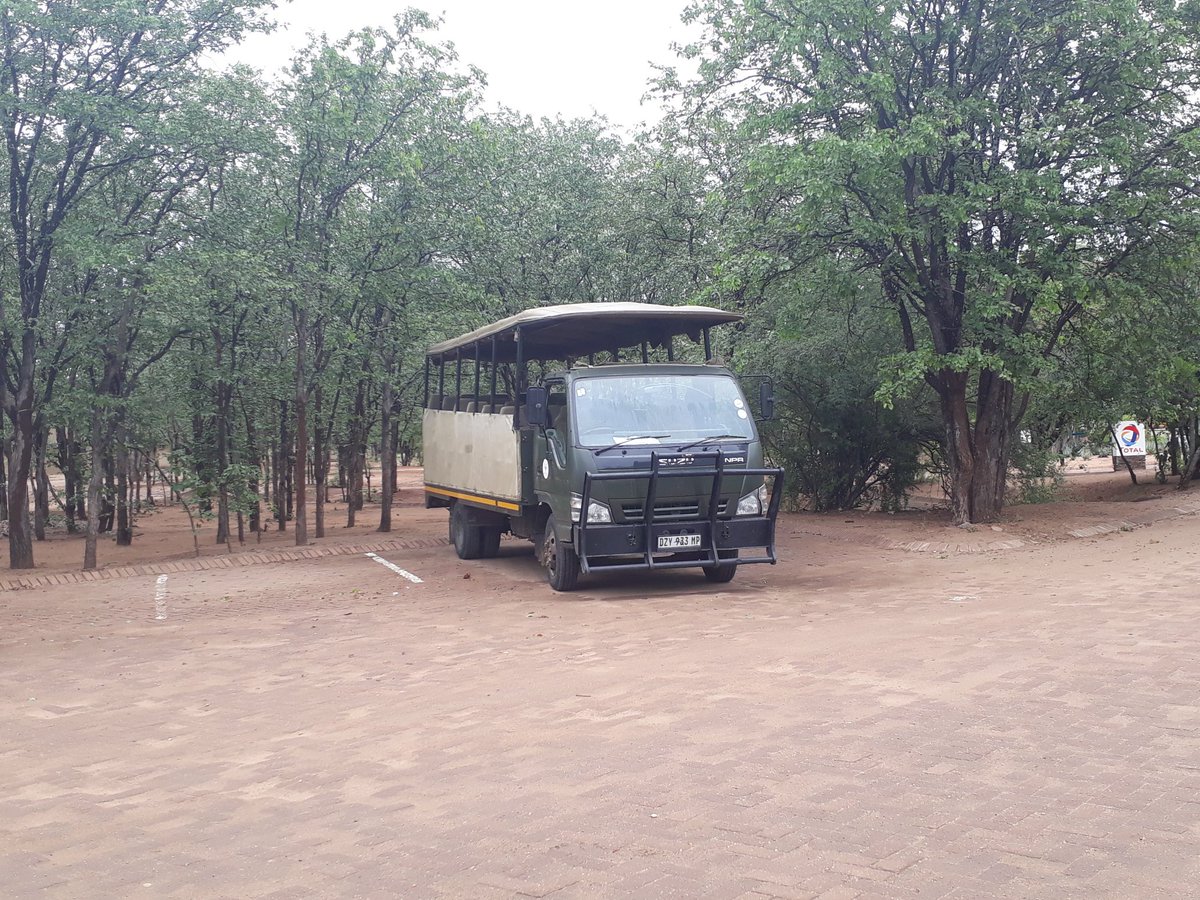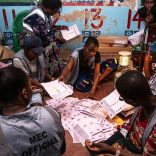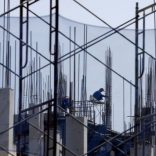South Africa to open new inquest into the 1977 death in custody of anti-apartheid leader Steve Biko
ALERT: Kruger shuts all gravel roads as Dineo brings heavy rain

Jacarand News / #Dineo evacuation vehicles in case visitors and staff need to be moved inside Kruger National Park.
Visitors are being warned that the Kruger National Park has temporarily shut all gravel roads to the park, as guests booked in camps in the northern parts of the park are being relocated.
Forecasts show that various parts of Kruger, specifically the far north, are expected to receive heavy rain on Thursday, 16 February 2017.
Tropical Storm Dineo has been downgraded from Cyclone status after making landfall in Mozambique but the knock-on effects are expected to still pose severe risks of heavy rain and strong winds.
According to the SA Weather Service, satellite-derived estimates of overnight rainfall indicate at least 100 to 200mm of rain occurred overnight in Mozambique along the coast and adjacent interior, between Inharrime in the south and Vilanculos in the north – with the same levels forecast for parts of South Africa.
Risk of heavy showers and thunderstorms over the lowveld and escarpment regions of Mpumalanga and Limpopo remain for Thursday, especially towards evening and overnight, with estimated at 100 to 200mm can be expected over the eastern half of Limpopo province. These conditions will continue into Friday, 17 February, says the weather service.
Precautionary measures
According to William Mabasa, SANParks Acting Head of Communications the park is instituting precautionary measures by temporarily closing gravel roads and these remote camps in the park.
Temporarily close are as follows:
– Nyalaland Wilderness Trail
– Olifants Wilderness Trail
– Sirheni Bush Camp
– Bateleur Bush Camp
Guests booked in the flagged camps in the north will be moved to safer camps, says Mabasa, with a “disaster management team on alert until the situation improves”.
“These closures are necessary to ensure visitors’ safety during this time and we would like to advise guests to stick to the tar roads whilst driving inside the Park. Guests must avoid all roads with a ‘No Entry’ signs or blocked with other objects.”
Mabasa also urged visitors who would like to enquire or send communication related to the rainfall to please contact our Emergency Centre Numbers 013 735 0197/4325 or 076 801 9679. It is important to note that there is no cellphone coverage in the park – so any updates would be useful and valuable for SANParks, says Mabasa. Click here to visit the Kruger SANParks page.
Mabasa further reported that all SA Airlink flights to Skukuza are still operating as normal as no risk has been identified… “Should any change occur, information will be shared accordingly.”
Airlink confirmed to Traveller24 that none of its flights had been affected by Dineo, not even its scheduled flights to Vilanculos.

What are flash floods?
Flash floods occur within few minutes or hours of excessive rainfall. This may be caused by a blocked storm water drain or a dam failure or a severe and heavy rainstorm.
Nearly half of all flash flood deaths are auto related, so never drive or let anyone drive through flood waters. Roads could be washed out under the strong currents. And if your car stalls in just 60cm of moving water, the water will have enough force to lift up your car and carry it away.
If a flash flood warning has been issued for your area, act immediately. You may only have seconds before flood waters appear.
If flooding occurs:
Immediately move to higher ground or stay on high ground
Evacuate if directed by officials
Avoid walking or driving through flood waters
Motorist Safety
NEVER drive into water covering the road. You do not know how deep it is or if the road is washed away.
Turn around and go the other way!
Look out for flooding at highway dips, bridges and low areas.
If the vehicle stalls, leave it immediately and seek higher ground.
Be cautious, especially at night when visibility is impaired.
Do not park your vehicle along streams, particularly during threatening conditions.
Cyclone Safety Tips
The following tips could be useful if you find yourself in the affected areas, as recommend by Resilium Insurance.
Preparing for a cyclone
Assemble an emergency kit that includes things like first aid supplies, torch, battery operated portable radio, important documents and medicines.
Regularly clear gutters and rubbish from around your property.
Ensure your family members and/or employees know how to turn off mains supply for water, power and gas.
Make sure your property has clear access for emergency services.
Have an evacuation plan and discuss with your family and/or employees.
Regularly check the condition of your property’s roof and arrange the repair of any loose tiles, eaves or roof screws.
Fit windows with shutters or metal screens.
Ensure your vehicle is in good working order.
If you receive a warning for your area, charge your mobile battery and fill up the car if possible.
At the onset a cyclone
First and foremost, the safety of you, your loved ones and employees should come first.
Use local alerts and warning systems to get information and expert informed advice.
If safe to do so, move your vehicle undercover and secure any outdoor furniture and other items.
Fill buckets, sinks and baths with water in case the water supply becomes restricted.
Gather everyone indoors including any pets.
Stay away from doors, windows and exterior walls.
Turn off all electricity, gas and water and unplug all appliances.
During a cyclone
Listen to your portable radio for updates and remain indoors until advised.
If an official evacuation order is issued, you must leave immediately and seek shelter elsewhere.
After a cyclone
If you have been evacuated, don’t return to your property or vehicle until authorities confirm it is safe to do so.
Flooding can occur after a cyclone. Use local alerts and warning systems to get information and expert informed advice.
Stay away from damaged areas and properties.
Don’t use electrical appliances that have been wet until they’ve been checked for safety by a professional.
Drinking water may be contaminated, so listen out for news reports to confirm whether the community’s water supply is safe to drink.
Take photos and dispose of any items that have been affected by contaminated flood waters.
If you have been evacuated, only return to your property when authorities indicate it is safe.
Stay away from damaged power lines, fallen trees and flood waters.












Leave a Reply
Be the First to Comment!
You must be logged in to post a comment.
You must be logged in to post a comment.